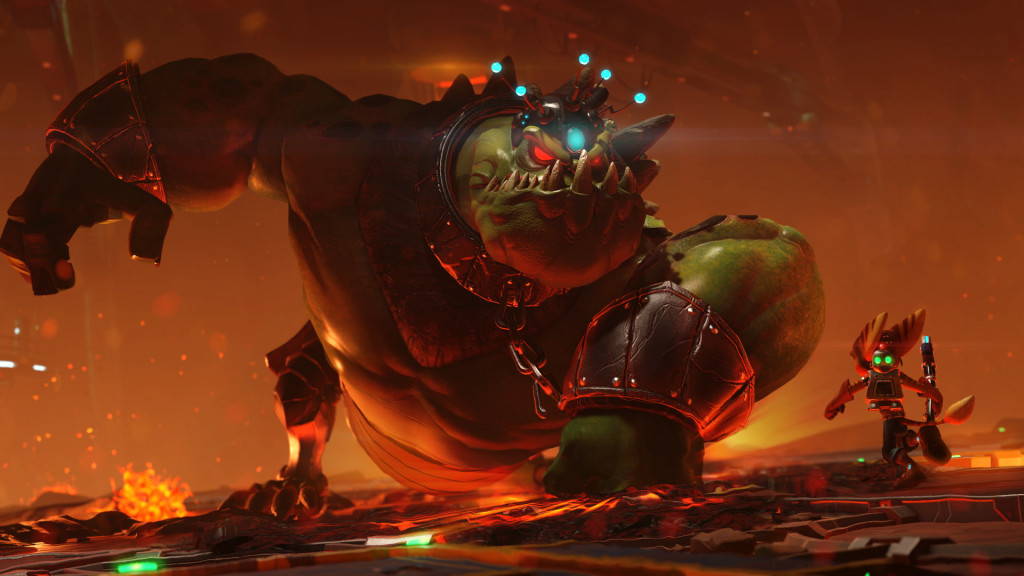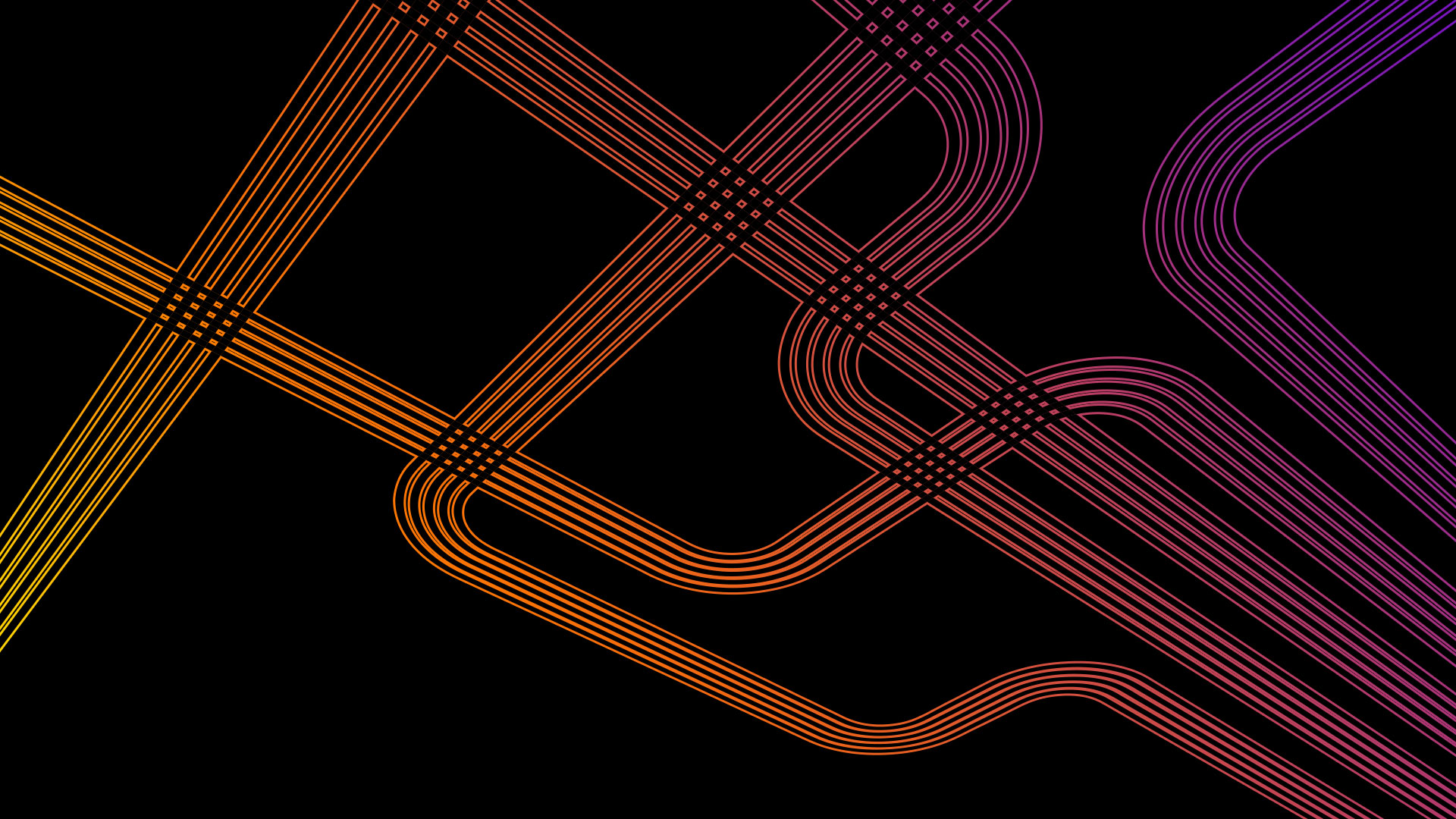Ratchet & Clank originally released for the PlayStation 2 in 2002 and introduced the video game world to the unforgettable duo (a mechanic named Ratchet and his robotic friend, Clank) and their comical adventures across the galaxy. Meanwhile, reoccurring characters like Captain Qwark ended up being the duo’s ally or adversary, depending on the adventure. Almost fourteen years and eleven games (not including the spin-offs) later, we saw the two come together again for the first time in the new Ratchet & Clank game that released this week, which retells the story of the original game.
However, instead of being a straight remake, remaster or reboot—as video games are often fond of doing—the team at Insomniac Games has taken a completely unique approach. The release of the game roughly coincides with the premiere of a first Ratchet & Clank movie, which hits theaters on April 28th and features an all-star cast that includes Rosario Dawson (Sin City; Marvel’s Daredevil), Paul Giamatti (Straight Outta Compton; Billions), John Goodman (Argo; Monsters Inc.) and Sylvester Stallone (Rambo; The Expendibles). Insomniac developed Ratchet & Clank based on the events from the movie, making it a game that’s based on a movie… that’s based on the game. If that concept makes your head spin a little, then you might be in just the right mindset for Ratchet & Clank‘s brand of humor.
[a]listdaily sits down with Chad Dezern, studio head at Insomniac’s North Carolina studio, creative director Brain Allgeier, and chief brand officer Ryan Schneider to talk about how the video game and movie are tied together, and what new adventures await in this retelling of a classic story.
How does it feel to make a Ratchet & Clank game based on a movie that’s based on the game?
Ryan: The game is out, it’s doing terrific, the reviews have been outstanding and it’s hard to find copies of Ratchet & Clank in stores. So, that’s always a good sign. The film comes out in just over two weeks, and we’re encouraging everybody to fill theaters so a video game movie will be number one at the box office.
How much inspiration does the game draw from the movie?
Chad: Well, we say it’s the game based on the movie based on the game, and we’re half tongue-in-cheek, but it really is the truth. We made the [original] game for the PlayStation 2 back in 2002, and it was translated to a feature film. The feature film and game share one writer, T.J. Fixman, so they have a similar script in the early-going and they both share story beats. They’re both kind of our ultimate take on Ratchet and Clank’s origin story. The two of them were real back-and-forth collaborations to build it together and make sure they work as a cohesive whole.
Brian: One of the funny things is, is that it is a re-imagination. So, the best way to frame it was through the view of Captain Qwark. That’s our opportunity for Qwark to kind of bend the fiction and tell it his own way. That’s how we could make the game work very well with the over-arching mythology, starting from the first game up to the movie. This is Qwark’s view and perspective. We have an opportunity to visit a lot of the earlier planets that were featured in the original game, and at the same time, introduce new sets, characters and locations from the film.
What convinced you to make a game that retells Ratchet and Clank’s origin?
Chad: We love Ratchet & Clank and its universe, and we felt it was a really good time to introduce it to a new audience, and apply everything we’ve learned over the years making games. We have this rare opportunity to go back and improve the way shooting feels. If you played the original Ratchet & Clank, you’ll remember that it’s a little hard to shoot sometimes. We were still learning the basics of third-person shooting mechanics.
We also cleaned up Ratchet and Clank’s origin story, making sure that any minor inconsistencies were smoothed out. Looking at what we can do with the visuals these days was also a big incentive. We’ve always wanted Ratchet & Clank games to look like a CG film, and for the first time, we could make that a reality.
We also love making those [Ratchet & Clank] games, and there’s a lot of enthusiasm around here for them, so it was a really easy decision to make one.
Brian: I think also the fans’ enthusiasm has not waned. I’m just shocked at how a lot of people who played the original game, back when they were 10-years-old or so, are now in their mid-twenties. So there’s a lot of love out there for Ratchet. It’s been really cool seeing how the franchise has grown in terms of everyone’s collective consciousness of it. I remember telling people I was working on Ratchet & Clank back in 2002, and they were like, “What’s that?” Now everyone knows what it is. It’s really exciting to come out with a big movie and game at the same time. We’re really proud of both of them.
Has it been a challenge to develop a game that helps promote the movie, but doesn’t spoil it?
Chad: [Laughs] It’s been a normal amount of challenge—they’re all painful. It’s always a challenge to come up with a good macro-design. This one might be a slightly different process than normal because we had a lot of story beats to consider and had to work out the proper pacing.
Brian: Yeah, the Qwark framing was a great device and it helped loosen things up a bit. We had a few scenes where we were painting ourselves into a corner showing a movie scene, but we had a chance to get Qwark in there to narrate over it and bend the fiction a little bit.
It was a bit of a back-and-forth act, because we had moments when the movie would come up with scene, and we weren’t sure if it would be a final scene that needed to be incorporated into the game. But it was great, how we could collaborate with Rainmaker and Blockade to flesh out a coherent game and film.
Chad: Sometimes we would make concept images of a location, find out they’ve been realized in the film as a set, then we would analyze the set back in the game to match it as closely as we could. At times, the game and film are sharing assets, and really this is the first generation where that sort of thing is possible.
What cross-promotions do you have planned between the game and movie?
Ryan: Yes, there has been heavy emphasis in collaborating with Sony and Focus. There have been a lot of group meetings on how to do that. You’ll see it in video content. For example, if it’s a film-related asset, you might see “Play the game,” with a motion graphic at the end. Then, if it’s a game asset, you’ll see something at the end to encourage people to see the movie on April 29th.
We’ve been very involved with the planning stages of what gets executed on the Focus side of things. Focus has been active on participating with PlayStation for their executions as well.
Given the long history of the franchise, has promoting the new game been different from past ones?
Ryan: The movie certainly helps, and it gives us a giant “elephant in the room,” so to speak, that encourages all other sources to sit up and take notice a little more. But by-and-large, it’s been the same kind of challenge you’d expect from promoting a game in general. It’s just that we have the added clout of a film behind it.
Why do you think Ratchet & Clank has such a long-lasting appeal?
Brian: From my perspective, Ratchet & Clank is a special franchise because of how it blends humor and heart. At the same time, you’re blowing up the galaxy with all sorts of crazy and hilarious weapons that you’re not going to see anyplace else.
What was the most important thing you tried to keep in mind while retelling the origin story?
Chad: I think the biggest thing was, “What do fans remember from the original game? What are the important sacred cows that we have to preserve?” There are certainly some narrative twists that we wanted to be consistent within the film and game, but there are some big moments, like the Snagglebeast and the lava level of Gaspar. There were a number of key levels we knew that fans would miss if they didn’t come back. So, the tough part was picking out which ones those should be and figuring out how to integrate them with the film.

How would you say the new Ratchet & Clank compares to the original?
Chad: With Ratchet & Clank, we really wanted to modernize the game so that it hits on all of those key points people remember and scratches that nostalgia itch. But also so that it feels great to play for modern audiences. For new players, it goes toe-to-toe with the best games out there right now. For returning players, it doesn’t feel like a big step backwards, causing them to remember how frustrating games used to be.
Brian: When Ratchet & Clank first started out, it was a platformer with weapons, and it has evolved into being more of a shooter platformer. The big focus became the weapons, so being able to circle-strafe, side-jump and fire at the same time has been something we’ve been polishing and improving over the years. I was shocked, when I went back and played the original Ratchet & Clank, at how it was really hard to shoot anything. Then I realized that back then, it was focused mainly on melee and jumping. Weapons were kind of a nice addition.

